Voodoo: A Reflection on a Misunderstood Religion






Thesis Statement
Voodoo, originating in West Africa, has received a bad reputation for centuries. What’s considered to be a healing and spiritual practice has been portrayed as a “deal with the devil” arrangement, due to rampant racism and religious discrimination. I wanted to unpack the religion and compare what people usually associate with the religion, and what its actual origins are.
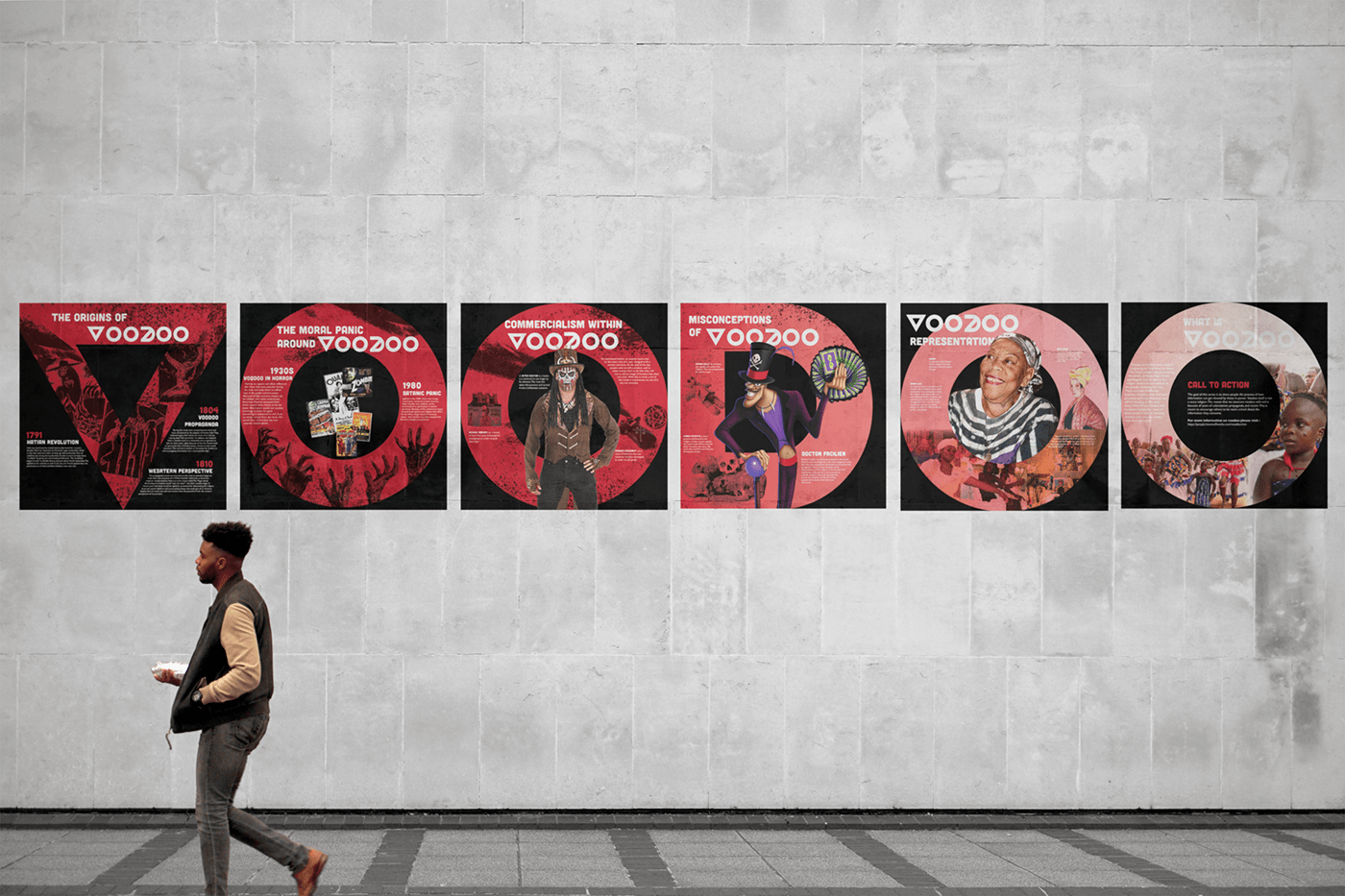
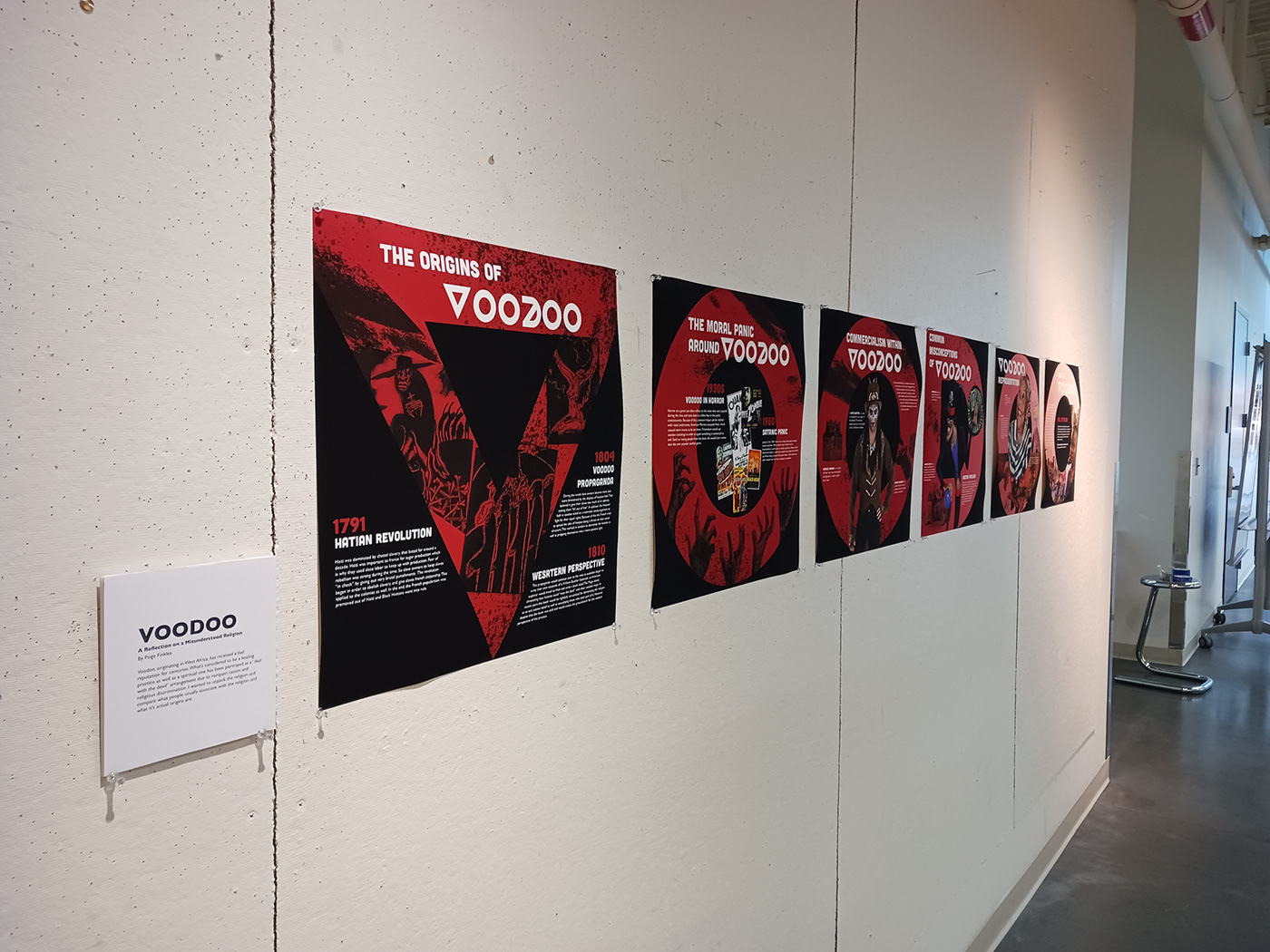
Introduction
Voodoo is a religion that is commonly practiced in West Africa. And when people think about it, their first thought is probably that it’s evil—raising the dead, communicating with ghosts, and human sacrifices, when that is far from the truth. Voodoo is about paying homage to loved ones who have passed. Healing both spiritually and physically.
These ideas did not come from thin air. It all comes from somewhere, outsiders coming in and making false claims of religion they take no part in. This is something that I have asked myself during my thesis. Why do people think Voodoo is an evil practice?
Goal
- To make people more aware of the information they consume.
- To promote compassion towards religions that we are not familiar with
Audience
The audience is people in the West who have had no exposure to voodoo outside of movies.
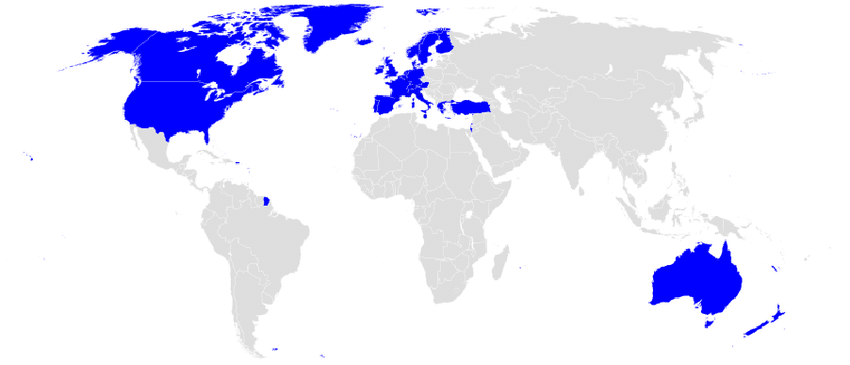
Research
To start the project I had to sit down with myself to examine what I wanted to tackle. I knew from the beginning that I wanted to break down why we associate all these negative things with Voodoo, and it expanded from there.
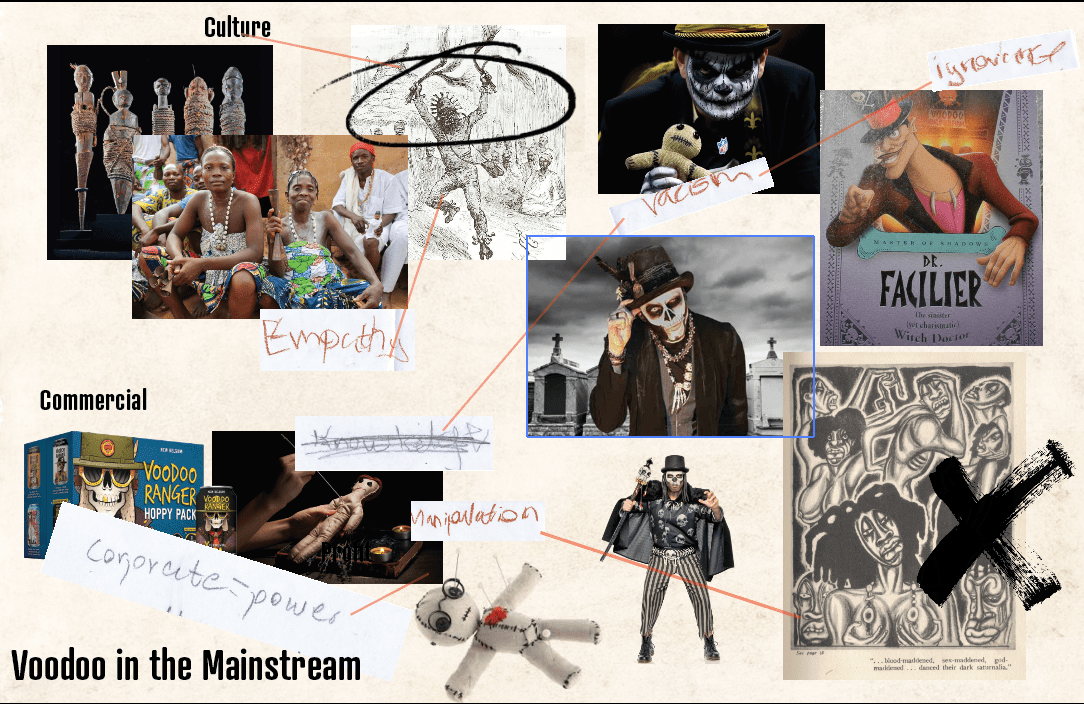
Original research map
Consultation #1
Gary Marquardt, Professor of African Studies at Western Michigan
In order to unpack the history of voodoo I interviewed Professor Marquardt in order to get his insight on how this bastardization could happen. The Haitian Revolution worked as a catalysis to kick start Voodoo being seen as an evil practice
What started the Haitian Revolution?
- Haiti was dominated by chattel slavery by the French
- Haiti was important to France for sugar production
- For every 10 enslaved persons there was one free person
- Fear of rebellion was strong during the time.
- Haiti wanted their freedom and France wanted to keep slaves “in check”
- Haiti was important to France for sugar production
- For every 10 enslaved persons there was one free person
- Fear of rebellion was strong during the time.
- Haiti wanted their freedom and France wanted to keep slaves “in check”
Haitians would often use their voodoo religion in order to cultivate the strength to carry on. The French would take note of this and use it against them. The French claimed their religion was capable of dark properties to spread propaganda against them.
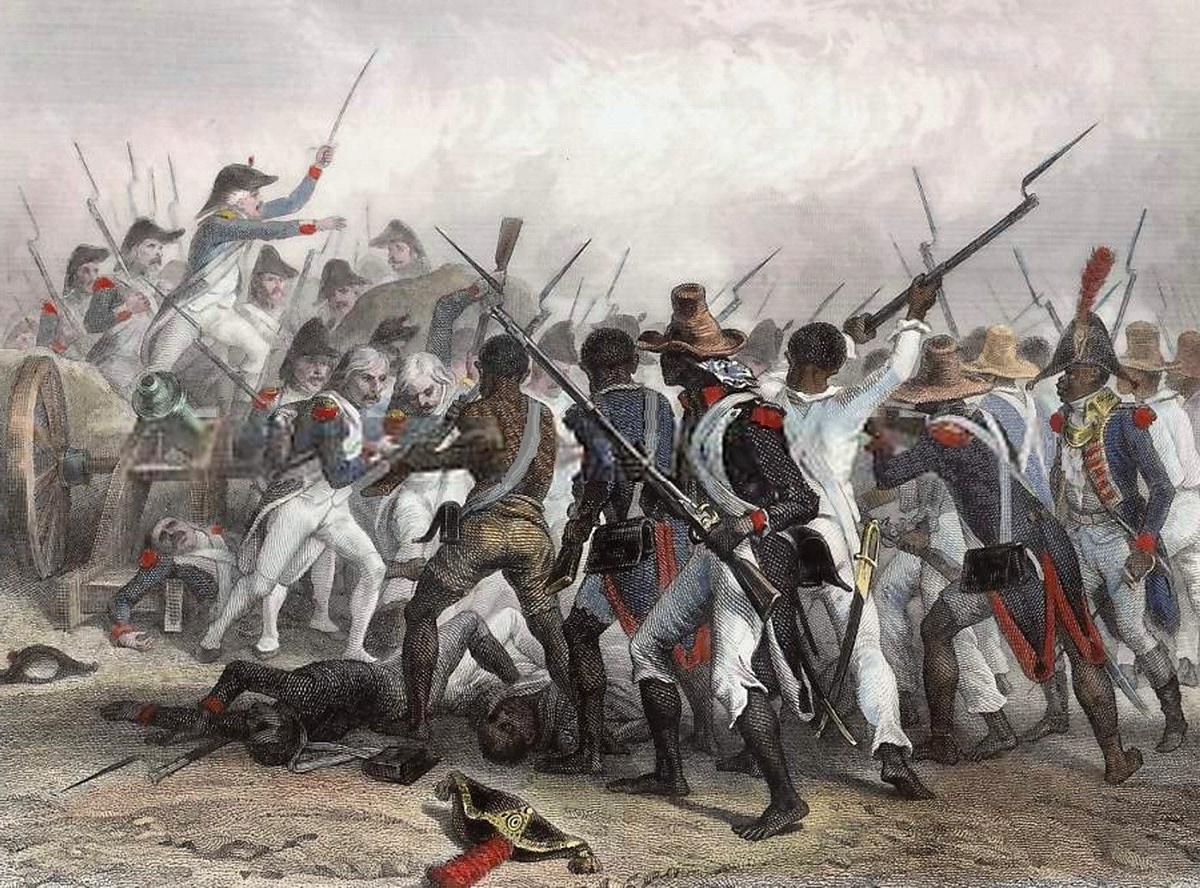
Britannica, T. Editors of Encyclopaedia. Haitian Revolution. Encyclopedia Britannica. https://www.britannica.com/topic/Haitian-Revolution
William Seabrook
An American adventurer who came to Haiti in the 1930s and spread misinformation. Claiming that these people would raise the dead. And brought up their ritual dances as an act of degeneracy. He would bring these ideas over to the West with his book "The Magic Island".
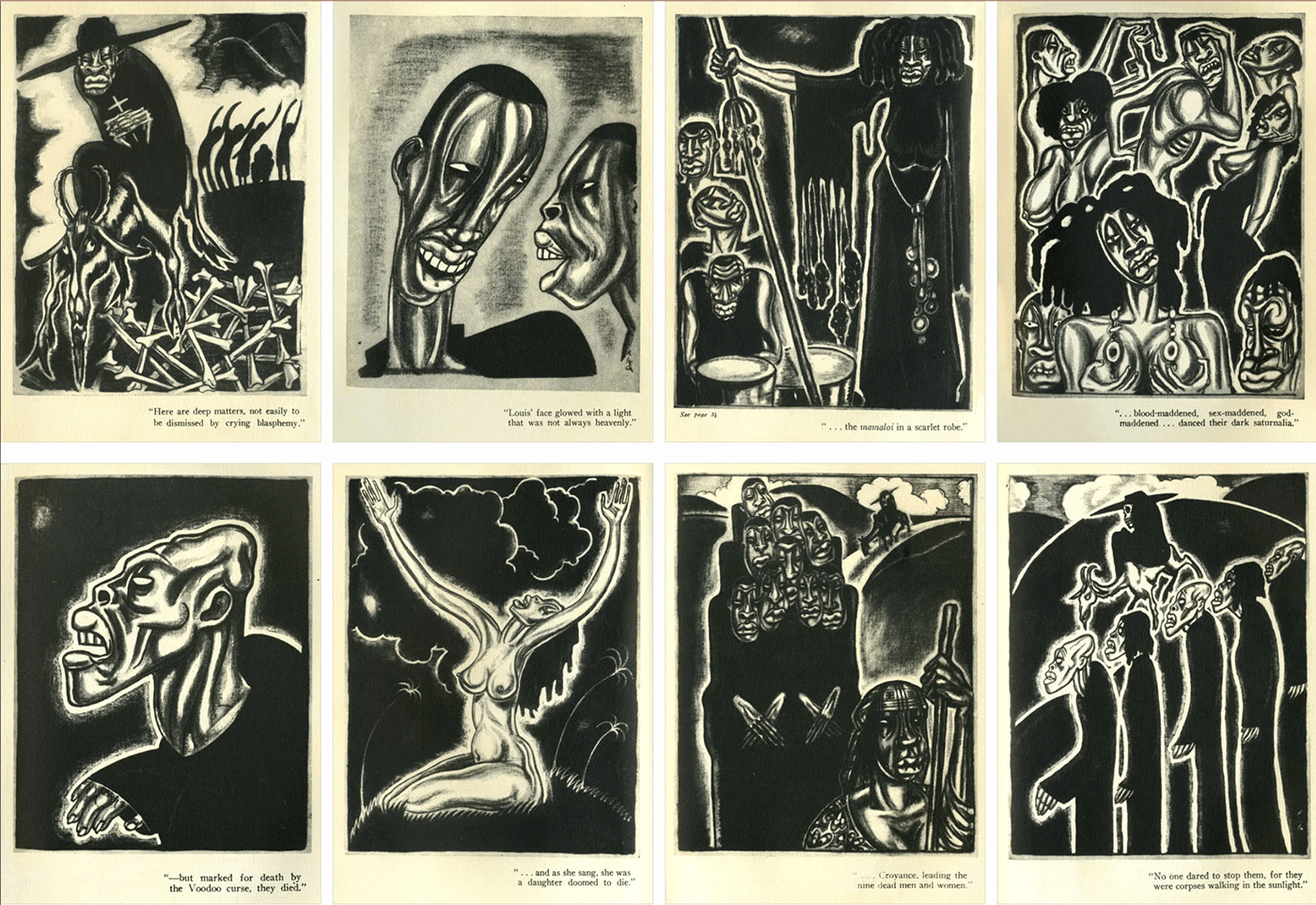
Pictures from the book "The Magic Island." the book uses racist caricatures of African people in order to sell the artificial "mystique" of voodoo
Consultation #2
Kenji Jumani Marshall, comic book artist, freelance illustrator, TV producer
I knew that I needed to look at more than just the history. I wanted to be able to humanize voodoo and look into what actually goes on within the religion. Kenji Marshall conducted a lot of research into voodoo for his comic book series "Witch Doctor".
How diverse is voodoo?
- Haitian, Louisiana, and West African practices are the most well known
- There are many more different variations of the region
Celebration of Family
- Voodoo is something that is deeply personal for those who practice it
- It's about being connected with one's family and ancestors of their past and paying their respect to them and other deities.
- Talked with older-generation immigrants that brought their religion over
- Retelling stories amongst generations is very important
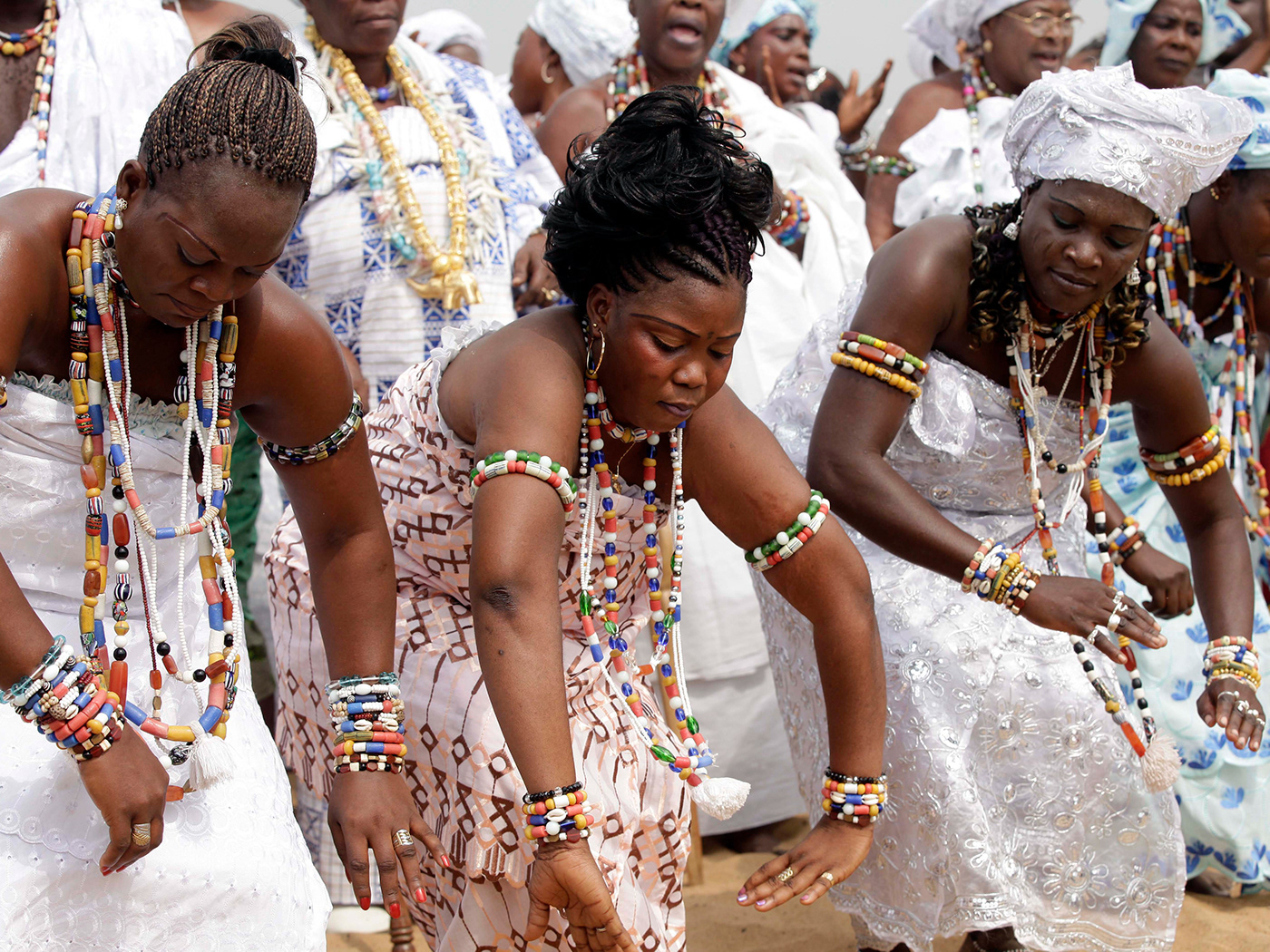
“Mysticism, Modernity Abound in Benin Voodoo Fest.” CBS News, CBS Interactive, 11 Jan. 2013, https://www.cbsnews.com/news/mysticism-modernity-abound-in-benin-voodoo-fest/.
Voodoo ritual dance
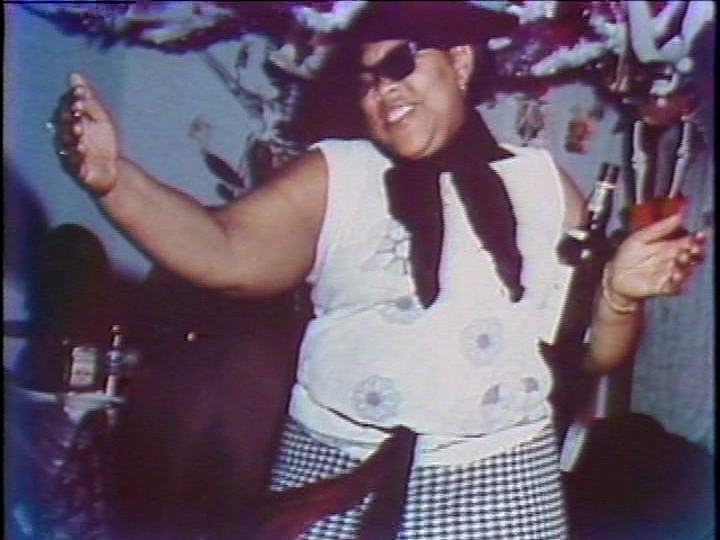
Mama Lola was a Voodoo priestess who operated out of Brooklyn. She was a well beloved member of the community
Design Process
Originally I planned on making it a timeline of events. However, I would eventually scrap that idea and instead focus on a series of posters. My original designs had the same aesthetic the entire time. After two different iterations, I thought that it would be better to show a progression from dark and mess to something more light and less chaotic, to show the clarity of information.











Reflection
One of the reasons Voodoo may be misunderstood is because it is often associated with magic and spells. However, the use of magic in Voodoo is not about causing harm to others or controlling them against their will. Instead, it is about harnessing the power of the universe to bring about positive change and healing.
Another aspect of Voodoo that is often misrepresented is the role of spirits or deities. In Voodoo, these spirits are not malevolent entities that seek to harm humans. Rather, they are seen as guides and protectors who can offer wisdom and guidance to those who seek their help. It's about connecting with the ancestors of their past.
Ultimately, Voodoo is a complex and multifaceted spiritual practice that cannot be easily reduced to a few stereotypes or misconceptions. It is a living tradition that continues to evolve and adapt to changing times, and it deserves to be approached with an open mind and a willingness to learn. I have learned to really examine what information I am being fed in media.
References
Text
Bellegarde-Smith, P., & Michel, C. (2006). Haítían Vodou: Spirit, myth and reality. Indiana University Press.
Weber. (2018). Haitian Vodou and Ecotheology. The Ecumenical Review, 70(4), 679–694. https://doi.org/10.1111/erev.12393
GLOVER, K. L. (2010). Haiti Unbound: A Spiralist Challenge to the Postcolonial Canon. Liverpool University Press. http://www.jstor.org/stable/j.ctt5vjfnr
Long, C. M. (2002). Perceptions of New Orleans Voodoo: Sin, Fraud, Entertainment, and Religion. Nova Religio: The Journal of Alternative and Emergent Religions, 6(1), 86–101. https://doi.org/10.1525/nr.2002.6.1.86
Scholars Portal. (n.d.). Desire and disaster in New Orleans: Tourism, race, and historical memory.
R., M. C. R. (n.d.). Horror noire: Blacks in American horror films from the 1890s to present. Routledge.
Reinhardt, T. (2005). 200 Years of Forgetting: Hushing up the Haitian Revolution. Journal of Black Studies, 35(4), 246–261. http://www.jstor.org/stable/40027220
Ramsey, K. (2012). From “Voodooism” to “Vodou”: Changing a US Library of Congress Subject Heading. Journal of Haitian Studies, 18(2), 14–25. http://www.jstor.org/stable/41949200
.
Fandrich, I. J. (2007). Yorùbá Influences on Haitian Vodou and New Orleans Voodoo. Journal of Black Studies, 37(5), 775–791. http://www.jstor.org/stable/40034365
Visual
YouTube. (2020). YouTube. Retrieved February 9, 2023, from https://www.youtube.com/watch?v=4amMTitO714.
Lee, N. (2020, June 15). The appropriation of Magic: How white people demonised voodoo. brizomagazine.com. Retrieved February 9, 2023, from https://brizomagazine.com/2020/06/15/the-appropriation-of-magic-how-white-people-demonised-voodoo/
Armstrong. (2009). Graphic design theory : readings from the field / edited by Helen Armstrong. Princeton Architectural Press.
Baldwin. (2010). Typography & Graphic Design. Quarterly Journal of the Royal Meteorological Society, 136(646), 1–1. https://doi.org/10.1002/qj.577
Mitchell. (2016). More to reading images: Motivations underlying horizontal and vertical time-related graphics. The International Journal of Literacies, 23(4), 29–53. https://doi.org/10.18848/2327-0136/cgp/v23i04/29-53
Chen, Wang, Y., Wang, Q., Wang, Y., & Qu, H. (2019). Towards Automated Infographic Design: Deep Learning-based Auto-Extraction of Extensible Timeline. arXiv.org. https://doi.org/10.1109/TVCG.2019.2934810
Nuhoğlu Kibar, & Akkoyunlu, B. (2017). Fostering and assessing infographic design for learning: the development of infographic design criteria. Journal of Visual Literacy, 36(1), 20–40. https://doi.org/10.1080/1051144X.2017.1331680
Hutchinson. (2022). Infographic Design Trends for 2023 [Infographic]. Social Media Today.
Krum. (2014). Cool infographic : effective communication with data visualization and design / Randy Krum. (1st edition.). Wiley.
